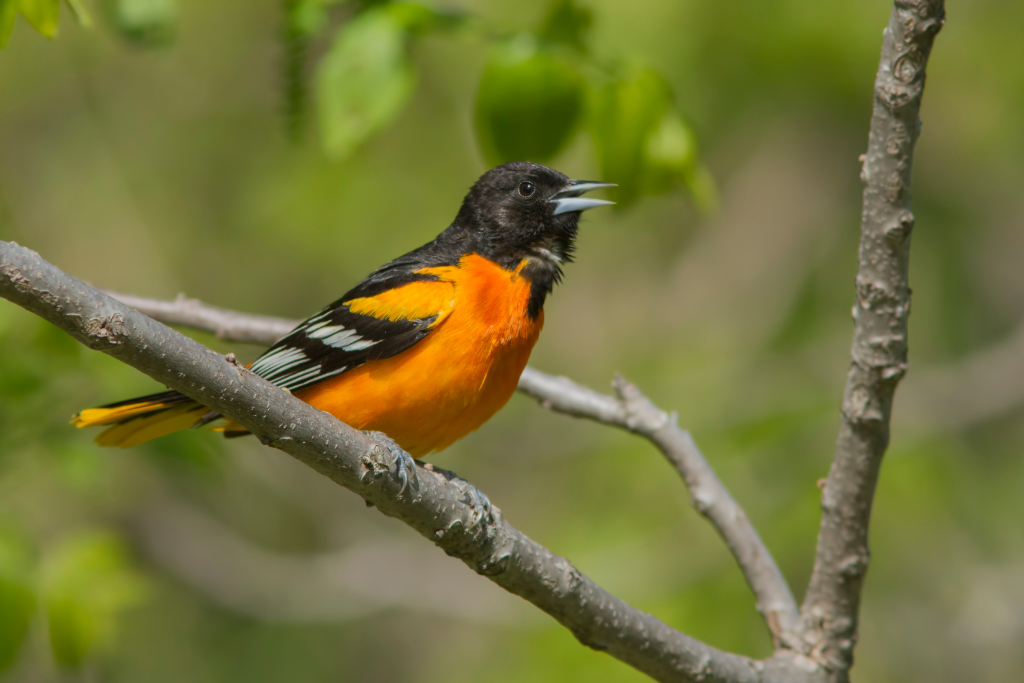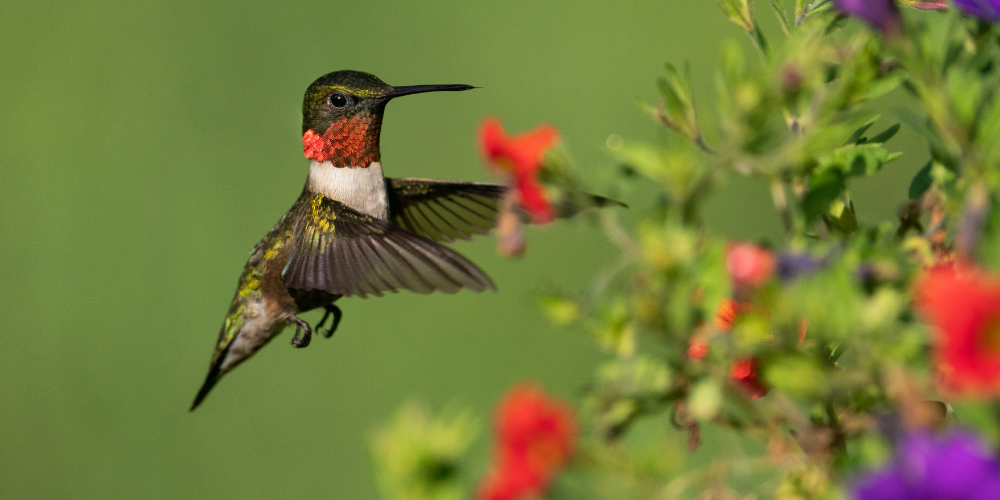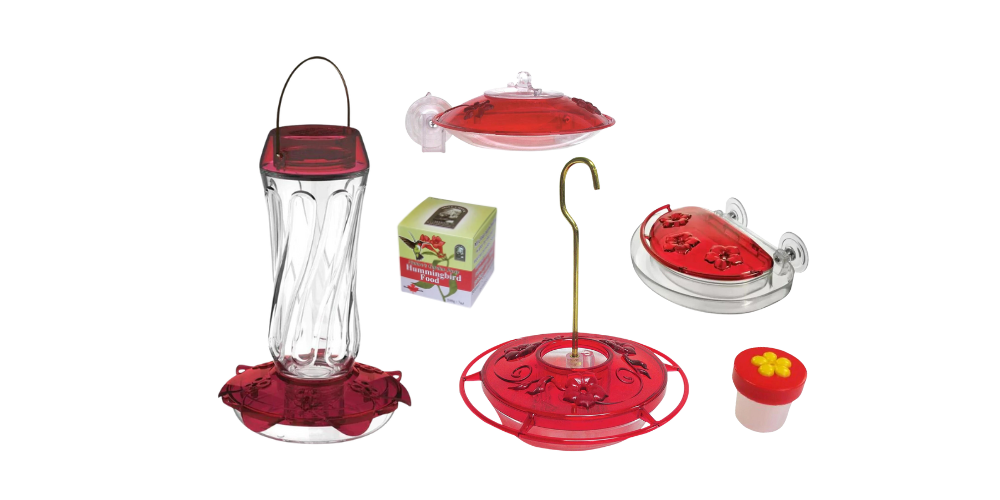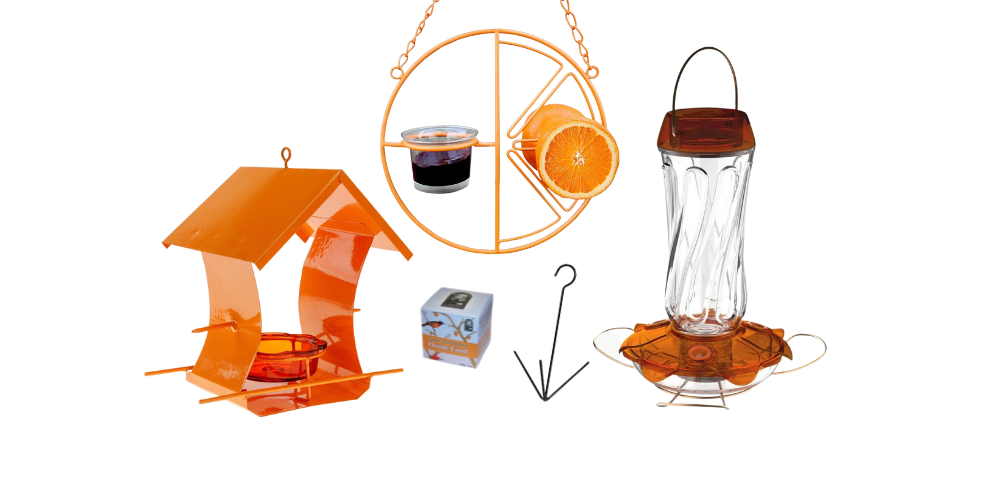Offer
Provide additional details about the offer you're running.
Provide additional details about the offer you're running.
Provide additional details about the offer you're running.

Oh, how we love April! The snow is melting, the sun is shining, and so many of our favourite birds are migrating north for the spring and summer. We're going to chat about some of our favourite birds to look out for here in Eastern Ontario when you're out on your spring walks!

The Ruby-Throated Hummingbird is the sole breeding Hummingbird in our area. These brilliant, tiny, precision-flying creatures glitter like jewels in the full sun, then vanish with a zip toward the next nectar source. They arrive in mid-April and enjoy the warm weather of spring and summer before migrating back down south. Track their migration as they make their way north!
A flash of green and red, Ruby-Throated Hummingbirds are bright emerald or golden-green on the back and crown, with gray-white underparts. Males have a brilliant iridescent red throat that looks dark when not in good light. Their wings make a quiet humming sound, louder and higher-pitched in males. Males sing a constant series of monotonous chips just at daybreak. A common call is an even chee-dit exchanged between individuals or during chases.
They are common during the summer, in suburbs and towns and can become quite bold, feeding at hanging plants and feeders on your porch or next to your windows.
Get an up-close and personal view of Ruby-Throated Hummingbirds by adding a hummingbird feeder to your backyard or planting red and orange tubular flowers. Check out our wide selection of premium hummingbird feeders, nectar, and accessories.
View Hummingbird Products Here

Baltimore Orioles are medium-sized, sturdy-bodied songbirds with thick necks and long legs. Their rich, whistling song echoing from treetops near homes and parks is a sweet herald of spring. Here for a short period, Baltimore Orioles are considered medium to long-distance migrants. They spend summer and winter in entirely different ranges. From early April to late May, flocks arrive in our area and eastern and central North America to breed from Louisiana through central Canada. They leave for wintering grounds in Florida, the Caribbean, Central America, and the northern tip of South America as early as July.
Look way up to find these singers: the male's brilliant orange plumage blazes from high branches like a torch. Nearby, you might spot the female weaving her remarkable hanging nest from slender fibres. Listen for a short series of paired notes, repeated 2–7 times, lasting 1–2 seconds. The flutelike sound has a full, rich tone. Occasionally, mated pairs may sing a duet.
Aim your eyes high to spot Baltimore Orioles. Listen for their distinctive chatter, unlike any other bird's call where Orioles occur. You can sport them perched at the tops of trees or flitting through the upper foliage.
Attract them to your backyard using an Oriole feeder that offers oranges, jelly, or nectar. You can also plant bright fruits and nectar-bearing flowers, such as raspberries, crab apples, and trumpet vines. Check out our wide selection of premium Oriole feeders, nectar, and jelly.

These small birds are so diverse that they have been divided into two distinct categories; Old World Warblers and New World Warblers. Just as their titles suggest, the New World Warblers are the species we are accustomed to seeing here throughout North America, while their counterparts exist in Europe, Asia and the South Pacific portions of the globe.
Viewing a Warbler in the spring is entirely different than viewing the same bird in the fall months. These birds are vibrant in every meaning of the word. They are colourful, the males sing their hearts out, and they can most commonly be spotted flittering and fluttering high in the tree tops above, treating birders to a unique experience.
While these are perching birds, the truth is, you'd be hard-pressed to catch one at one of your feeders. These birds feast primarily on insects, so the real challenge lies in getting out in the field and locating them on your own. Where they like to hang out can vary based on the different species, but looking at the trees in densely forested areas is a good place to start.
April is an exciting time for spotting various birds as they migrate for the breeding season. With the warm weather, it's a great time to dust off the bird feeders, fill them up and watch the birds in your yard. We also love getting out and exploring the local trails and listening and watching for the birds to return to the forests, wetlands, and fields.
What are your favourite birds to see in April? Let us know in the comments!
Author - Emily Kadoke-Scantlebury
High Quality Blend

